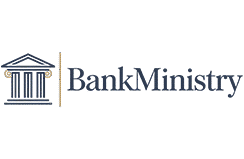The Rise of Women Entrepreneurs and the Need for Accessible Funding
In 2025, women-owned businesses are a driving force in the U.S. economy, representing 49% of all businesses and generating $1.9 trillion in annual revenue (2019 data). From innovative startups to established enterprises, women entrepreneurs are reshaping industries, yet they face persistent challenges in securing business loans for women entrepreneurs. Studies show women-owned businesses experience 25% loan denial rates compared to 19% for men-owned businesses, highlighting a critical funding gap. This comprehensive guide explores the landscape of business loans, grants, and alternative funding options tailored for women entrepreneurs, offering practical strategies to overcome barriers and fuel business growth.
This article draws on insights from reputable sources, including the U.S. Small Business Administration (SBA), Bank of America, LendingTree, NEWITY, and NerdWallet, to provide a detailed roadmap for accessing capital. Whether you’re launching a startup or scaling an established business, you’ll find actionable advice, lender comparisons, and tips to navigate the funding ecosystem effectively.
Why Women Entrepreneurs Face Funding Challenges
Historical and Systemic Barriers
Women entrepreneurs have historically faced significant obstacles in accessing capital. Until the Women’s Business Ownership Act of 1988, women often needed a male co-signer to secure business loans, limiting their financial independence. While legal barriers have diminished, systemic issues persist:
- Limited Access to Venture Capital: Only 1.9% of venture capital funding goes to companies with all-female founders, with just $2.4 billion allocated in 2023 (down from $5.1 billion in 2022).
- Higher Loan Denial Rates: Women-owned businesses face a 25% denial rate for loans compared to 19% for men, often due to shorter business histories or lower credit scores.
- Collateral Constraints: Women are less likely to have substantial collateral, a common requirement for traditional loans, due to wealth gaps and limited asset ownership.
Economic Impact of Women-Owned Businesses
Despite these challenges, women-owned businesses are thriving:
- 13 million businesses in the U.S. are women-owned, representing 42% of all firms.
- Economic Contribution: These businesses generate $2.1 trillion in annual receipts, though they account for only 22% of employer firms, indicating room for growth.
- Resilience: 63% of women entrepreneurs anticipate revenue growth in 2025, and 73% feel equipped to survive economic downturns, showcasing their adaptability.
The Importance of Tailored Funding Solutions
Given these barriers, specialized funding options like SBA loans, grants, and women-focused lending programs are critical. These solutions offer lower interest rates, lenient eligibility criteria, and additional support like coaching, making them ideal for women entrepreneurs seeking to start or grow their businesses.
Understanding Business Loans for Women Entrepreneurs
What Are Business Loans for Women Entrepreneurs?
Business loans for women entrepreneurs are financing options designed to address the unique needs of women-owned businesses. These loans may come from traditional banks, online lenders, or nonprofit organizations, often with features like:
- Lower interest rates or flexible terms to reduce financial strain.
- Lenient eligibility requirements, such as lower credit score thresholds or no collateral for smaller loans.
- Additional resources, including business coaching, mentorship, or access to women-specific networks.
Types of Business Loans Available
Women entrepreneurs can access various loan types, each suited to different business needs:
- SBA Loans:
- Backed by the U.S. Small Business Administration, these loans reduce lender risk, offering competitive terms.
- SBA 7(a) Loans: Up to $5 million for working capital, equipment, or debt refinancing; interest rates range from 10.25%–13.75% (2025 data).
- SBA 504 Loans: For fixed assets like real estate or equipment, with terms up to 25 years.
- SBA Microloans: Up to $50,000 through nonprofit lenders, ideal for startups or small businesses, with rates of 8%–13%.
- Business Lines of Credit:
- Provide flexible access to funds (e.g., $6,000–$250,000), with interest only on withdrawn amounts.
- Example: Fundbox offers lines up to $150,000 with a 600 credit score minimum, ideal for startups.
- Term Loans:
- Lump-sum loans repaid over fixed terms (short-term: 3–24 months; long-term: 5+ years).
- Example: Funding Circle offers term loans up to $500,000 with terms up to 7 years.
- Merchant Cash Advances:
- Quick funds based on future sales but carry high costs (e.g., Credibly’s factor rate of 1.11, equivalent to 11% additional repayment).
- Nonprofit Loans:
- Lenders like Accion Opportunity Fund offer working capital loans up to $250,000 with coaching, targeting underserved groups (90% of funding to women, people of color, or low-income borrowers).
Why Choose Loans Over Other Funding Options?
Unlike venture capital (which requires equity) or crowdfunding (which demands promotional effort), loans provide immediate capital with predictable repayment terms. For women entrepreneurs, loans are often more accessible than VC (only 16.1% of VC general partners are women in 2022) and allow retention of business ownership.
Top Lenders Offering Business Loans for Women Entrepreneurs
SBA-Backed Lenders
The SBA supports women through its Women’s Business Centers (WBCs) and loan programs, with 21.2% of SBA 7(a) loans going to women-owned businesses. Key lenders include:
- Huntington National Bank:
- Offers SBA 7(a), 504, and Express loans through its Lift Local Business program, which includes free entrepreneurial courses.
- Pros: Fast processing (as little as 2 weeks); long repayment terms.
- Cons: Limited to select states (e.g., CO, IL, IN, KY, MI, MN, OH, PA, WV, WI).
- Bank of America:
- An SBA Preferred Lender, offering loans from $500 to over $5 million with competitive terms.
- Pros: Access to the Access to Capital Directory for women-specific funding; supports 135,000 women globally through partnerships.
- Cons: Requires strong credit and business history.
Online and Alternative Lenders
Online lenders provide faster funding with more lenient requirements, though often at higher rates:
- Fundbox:
- Best for startups, offering lines of credit up to $150,000 with a 600 credit score and 6 months in business.
- Pros: Quick funding (next business day); startup-friendly.
- Cons: Weekly repayments over 3–6 months require careful budgeting.
- American Express Business Line of Credit:
- Best for strong credit profiles, with lines up to $250,000 at 3%–27% rates (6–24-month terms).
- Pros: Partners with Project W for women-specific resources; fast approvals (1–3 days).
- Cons: Requires an existing American Express relationship for higher limits.
- Credibly:
- Best for bad credit, offering working capital loans up to $600,000 with a 500 credit score and $180,000 annual revenue.
- Pros: Lenient credit requirements; fast application.
- Cons: High factor rates (starting at 1.11); high revenue threshold.
- OnDeck:
- Best for fast funding, offering term loans ($5,000–$250,000) and lines of credit ($6,000–$100,000) with same-day funding.
- Pros: Online resources for women; 625 credit score minimum.
- Cons: Not available in CA or VT for same-day funding.
- Funding Circle:
- Best for long-term loans, offering up to $500,000 with terms up to 7 years.
- Pros: No prepayment penalties; fast funding (2 days).
- Cons: Requires 2 years in business and $150,000 in revenue.
- Accion Opportunity Fund (AOF):
- Best for extra support, offering loans up to $250,000 with coaching in English and Spanish.
- Pros: Focuses on underserved groups; lenient eligibility ($30,000 revenue).
- Cons: Blanket lien for loans over $50,000; not available in MT, ND, SD, TN, VT, or DC.
- NEWITY:
- Specializes in SBA 7(a) loans up to $500,000, with no down payments and no collateral for loans up to $50,000.
- Pros: Streamlined process (funding in 3 weeks); 660 credit score minimum.
- Cons: Limited to SBA 7(a) loans; credit score barrier for some.
Nonprofit and Community Lenders
Nonprofit lenders like Accion Opportunity Fund and SBA Microloan intermediaries focus on underserved communities, offering smaller loans (up to $50,000) with 8%–13% rates and flexible terms (up to 84 months). These are ideal for startups or businesses with limited credit history.
Exploring Grants as a Non-Repayable Funding Option
Why Consider Grants?
Grants provide free funding without repayment, making them an attractive alternative to loans. However, they are highly competitive, requiring detailed applications, business plans, or pitch videos. Below are key grants for women entrepreneurs in 2025:
Top Grant Programs for Women Entrepreneurs
- Amber Grants by WomensNet:
- Three $10,000 monthly grants (startup, specific category, general business) and three $25,000 annual grants.
- Eligibility: 50% women-owned, U.S. or Canada-based, $15 application fee.
- Pros: Startup-friendly; simple application.
- Cons: Competitive; small fee.
- IFundWomen:
- A grant marketplace matching women-owned businesses to partner grants (e.g., Visa, Neutrogena).
- Eligibility: Women-owned, varies by grant.
- Pros: Streamlined universal application; coaching access.
- Cons: Grant availability varies.
- HerRise Microgrants (Yva Jourdan Foundation/HerSuiteSpot):
- Monthly $1,000 grants for under-resourced women, especially women of color.
- Eligibility: 51% women-owned, less than $1 million revenue, U.S.-based.
- Pros: Accessible; coaching support.
- Cons: Smaller amounts.
- Fund Her Future (Block Advisors by H&R Block):
- One $50,000 grand prize, five $10,000 runner-up grants, plus free bookkeeping and tax services.
- Eligibility: U.S.-based, $20,000+ in 2024 revenue.
- Pros: Significant funding; additional services.
- Cons: Requires established revenue.
- Tory Burch Foundation Fellows Program:
- $5,000 grants for 50 women, plus a yearlong education program and Kiva loan access.
- Eligibility: U.S.-based startups.
- Pros: Combines funding with education.
- Cons: Competitive; time-intensive.
- Amazon Small Business Grant:
- One $25,000 grand prize, four $20,000 finalist grants, ten $15,000 semi-finalist grants.
- Eligibility: Amazon Business customers, less than $1 million revenue.
- Pros: Substantial funding.
- Cons: Requires Amazon Business account.
State and Industry-Specific Grants
- Route 66 Extraordinary Women Micro-Grant: $2,000 for women-owned businesses along U.S. Route 66.
- Restaurants Care Resilience Fund: $5,000 for California restaurants.
- America’s Seed Fund (SBIR/STTR): $50,000–$1.8 million for technology startups.
- Cécred x BeyGOOD Fund: $10,000 for salon businesses in select U.S. markets.
How to Find and Apply for Grants
- Research: Use platforms like Grants.gov, Hello Alice, or IFundWomen to identify grants aligned with your business.
- Prepare: Create a compelling business plan, financial projections, and pitch materials. Some grants require fees (e.g., $15 for Amber Grants).
- Leverage Support: Consult SBDCs or WBCs for application guidance.
Alternative Funding Options for Women Entrepreneurs
Crowdfunding
Crowdfunding allows women to raise funds through small contributions from a large audience:
- Traditional Crowdfunding: Campaigns typically raise under $30,000 (e.g., Kickstarter, Indiegogo).
- Equity Crowdfunding: Selling business shares to investors, potentially yielding larger amounts.
- Pros: Builds customer base; low barrier to entry.
- Cons: Requires strong marketing; platform fees apply.
Venture Capital (VC)
Venture capital offers significant capital for high-growth startups but requires equity:
- Women-owned startups generate higher returns on VC funding compared to male-founded startups.
- Eligibility: Strong business plan, pitch deck, and market potential.
- Pros: Large funding amounts; mentorship from investors.
- Cons: Highly competitive; equity loss.
Angel Investors
Angel investors are high-net-worth individuals investing in early-stage businesses (average $330,000):
- Organizations like Golden Seeds, 37 Angels, and Pipeline Angels focus on women-owned startups.
- Pros: Mentorship and networking; flexible terms.
- Cons: Requires compelling pitch; equity trade-off.
How to Secure a Business Loan or Grant: A Step-by-Step Guide
Step 1: Assess Your Business Needs
Determine the purpose of funding (e.g., working capital, equipment, expansion) and the amount needed. For example:
- Startups: Consider SBA Microloans ($50,000) or Fundbox lines of credit.
- Established Businesses: Explore SBA 7(a) loans ($500,000) or Funding Circle term loans.
Step 2: Check Eligibility Requirements
Review lender or grant criteria:
- Credit Score: Ranges from 500 (Credibly) to 660 (NEWITY, Funding Circle).
- Time in Business: 6 months (Fundbox, Credibly) to 2 years (Funding Circle).
- Revenue: $30,000 (AOF) to $180,000 (Credibly).
- Ownership: Most grants require 50%–51% women ownership.
Step 3: Prepare Documentation
Common requirements include:
- Business Plan: Outline goals, market analysis, and financial projections.
- Financial Statements: Tax returns, bank statements, profit/loss statements.
- Personal Information: Credit reports, proof of U.S. citizenship (for SBA loans).
Step 4: Apply Strategically
- Loans: Use tools like SBA’s Lender Match or NEWITY’s platform for streamlined applications.
- Grants: Submit tailored applications via platforms like IFundWomen or Grants.gov.
- Tip: Apply to multiple opportunities to increase chances, but prioritize alignment with your business.
Step 5: Leverage Support Resources
- Women’s Business Centers (WBCs): Offer free counseling and training.
- SBDCs: Provide application guidance and business planning support.
- Bank of America’s Breakthrough Lab: Offers mentorship for tech startups.
Common Mistakes to Avoid When Seeking Funding
- Ignoring Credit Scores: A low credit score (below 600) can limit options. Improve your score by paying down debt or correcting credit report errors.
- Applying Without a Business Plan: Lenders and grant providers require clear plans to assess viability.
- Overlooking Fees: High-cost loans (e.g., Credibly’s factor rates) or grant application fees ($15 for Amber Grants) can add up.
- Failing to Compare Options: Compare interest rates, terms, and support services to find the best fit.
- Neglecting Support Resources: Not leveraging WBCs, SBDCs, or coaching can weaken applications.
Practical Applications: Case Studies and Success Stories
Case Study 1: Jill Rae Scarbro (SBA Success Story)
Jill Rae Scarbro, the 2022 SBA Small Business Person of the Year, used SBA 7(a) loans to grow her West Virginia-based business, Bright Future LLC. With support from WBCs, she accessed capital and training to expand operations, demonstrating the power of SBA resources for women entrepreneurs.
Case Study 2: Juanny Romero (Bank of America Support)
Juanny Romero, 2023 SBA Small Business Person of the Year Runner-Up, leveraged Bank of America loans and the Access to Capital Directory to scale her coffee business, Mothership Coffee Roasters. Her success highlights the importance of lender partnerships and tailored financing.
Case Study 3: Amber Grant Recipient
A women-owned startup in California used a $10,000 Amber Grant to purchase equipment, avoiding debt while establishing a customer base. The grant’s simple application process made it accessible for a first-time entrepreneur.
Broader Context: Supporting Women Entrepreneurs Beyond Funding
Women’s Business Centers (WBCs)
The SBA’s Office of Women’s Business Ownership oversees 130+ WBCs nationwide, offering:
- Free or low-cost counseling and training.
- Support for economically or socially disadvantaged women.
- Networking events to connect with other entrepreneurs.
Federal Contracting Opportunities
The WOSB Federal Contract Program sets aside contracts for women-owned small businesses in industries where women are underrepresented:
- Eligibility: 51% women-owned, U.S.-based, meet SBA size standards.
- Certification: Apply via MySBA Certifications or third-party certifiers like WBENC.
- Goal: The federal government aims to award 5% of contracting dollars to WOSBs annually, a target met for three consecutive years.
Educational Programs
- Bank of America Institute for Women’s Entrepreneurship at Cornell: Trained 100,000+ women globally, offering free courses on business planning.
- Tory Burch Foundation Fellows Program: Combines $5,000 grants with workshops and networking.
Safety Precautions and Financial Considerations
When pursuing business loans for women entrepreneurs, take these precautions:
- Understand Loan Terms: High-cost options like merchant cash advances can strain cash flow. Compare APRs and repayment terms carefully.
- Avoid Over-Borrowing: Only borrow what your business can repay, considering revenue projections.
- Protect Personal Assets: Loans requiring personal guarantees (e.g., OnDeck, American Express) put personal finances at risk.
- Consult Experts: Work with financial advisors or SBDCs to evaluate options and avoid predatory lenders.
For grants, ensure applications are submitted to reputable programs to avoid scams. Verify legitimacy through official sources like Grants.gov or SBA.gov.
Empowering Women Entrepreneurs Through Strategic Funding
Business loans for women entrepreneurs are a critical tool for overcoming systemic funding barriers and fueling business growth. From SBA 7(a) loans and microloans to grants like the Amber Grants and Tory Burch Fellows Program, women have access to diverse financing options in 2025. By leveraging lenders like NEWITY, Fundbox, and Accion Opportunity Fund, and tapping into resources like WBCs and SBDCs, women entrepreneurs can secure the capital and support needed to thrive.
Start by assessing your business needs, preparing a strong application, and exploring both loans and grants to maximize opportunities. With persistence and strategic planning, women entrepreneurs can turn their visions into reality, contributing to the $2.1 trillion economic impact of women-owned businesses in the U.S.
Read More – business line of credit for startups
alternative financing for small businesses
Frequently Asked Questions
What are the best business loans for women entrepreneurs in 2025?
Top options include SBA 7(a) loans (via NEWITY, Huntington National Bank), Fundbox lines of credit for startups, and Accion Opportunity Fund loans for underserved groups. Compare rates, terms, and eligibility to find the best fit.
Are there grants specifically for women-owned businesses?
Yes, grants like Amber Grants ($10,000 monthly), HerRise Microgrants ($1,000), and Tory Burch Fellows ($5,000) target women entrepreneurs. Check IFundWomen or Grants.gov for more opportunities.
How can I improve my chances of securing a business loan?
Improve your credit score (aim for 660+), prepare a detailed business plan, and provide financial documents. Use SBA’s Lender Match or consult WBCs for guidance.
What should I avoid when applying for funding?
Avoid high-cost loans (e.g., merchant cash advances), over-borrowing, or applying without a business plan. Verify grant legitimacy and compare lender terms to avoid unfavorable conditions.
Disclaimer: This content is for informational purposes only. Always consult a qualified financial professional for advice on business loans and funding decisions.




